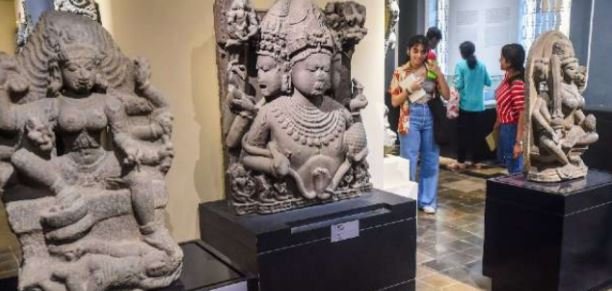The upcoming Yuge Yugeen Bharat National Museum, set to become the world’s largest museum, will encompass eight thematic sections, narrating India’s historical journey over a span of 5,000 years. The museum, situated in the heart of the country’s capital, will occupy an impressive area of 1.17 lakh sqm and feature 950 rooms spread across a basement and three storeys, according to officials.
On International Museum Day, Prime Minister Narendra Modi unveiled a virtual walkthrough of the museum while inaugurating the International Museum Expo at Pragati Maidan in Delhi. Subsequently, PM Modi inaugurated the International Exhibition-cum-Convention Centre (IECC) complex, renamed Bharat Mandapam, which was developed at an approximate cost of ₹2,700 crore on a sprawling campus of about 123 acres.
The Yuge Yugeen Bharat National Museum will be organized into eight distinct thematic segments, representing India’s rich civilizational heritage across different eras. These segments encompass ancient Indian knowledge, the transition from ancient to medieval times, the medieval era, the transformation phase between medieval and modern India, modern India, the period of colonial rule, the freedom struggle, and the century following independence, including future aspirations. The museum is forward-looking, aiming to inspire visitors with its vision for the future.
The virtual walkthrough offers a digital preview of the galleries and gardens within the museum once it is completed. Visitors can explore exhibits about ancient town planning systems, the Vedas, Upanishads, and ancient medical knowledge, among other subjects. Significant historical periods such as the Mauryan and Gupta Empires, Vijayanagara Empire, Mughal Empire, and various dynastic rules are highlighted in the walkthrough.
As part of the project, the National Museum’s precious ancient artifacts and extensive collections, currently housed on Janpath, will be relocated to the buildings of the North and South Blocks. The South Block is currently home to the External Affairs Ministry, Defense Ministry, and Prime Minister’s Office, while the North Block houses the ministries of finance and home. The current National Museum building will be incorporated into the Kartavya Path and its annexes.
The foundation stone of the existing National Museum building was laid by India’s first Prime Minister, Jawaharlal Nehru, on May 12, 1955. The Kartavya Path, formerly known as Rajpath, is a ceremonial axis stretching from India Gate to Raisina Hill. With the completion of the Yuge Yugeen Bharat National Museum, India will boast an extraordinary cultural heritage showcase befitting its rich history and traditions.
